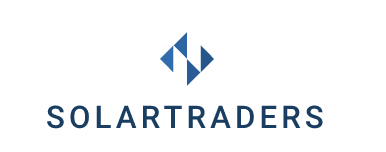In today’s article we would like to take a closer look at the climate targets in relation to the PV market. Here, especially the price development plays a major role and the funds provided by the governments. We want to answer the following questions in this article:
- Which targets are to be implemented?
- What are the forecasts for these goals?
More money for climate protection – investments should drive climate protection forward
Both the U.S. authority and the German government parties promise to invest more money in climate protection. In this context, the German government added a few more points to the existing climate protection plan in June 2021. One key objective is to achieve climate neutrality by 2045 instead of 2050 as originally planned. The bar has also been raised for the 2030 climate target, as greenhouse gases must be reduced by 65% instead of the 55% originally proposed.
However, climate experts warn that these targets will not be enough to limit global warming to 1.5 degrees. Today, we are at a total installed capacity of 55 GW in 2021. However, according to the 07/2021 article from PV Magazine, at least 200 GW must be installed by 2030 to meet the goals of the Paris Climate Agreement. This means an annual PV increase of at least 15 GW in Germany alone – far from the 2 GW to 3 GW that have been added annually in recent years.
How can these goals be achieved, despite rising prices and legal hurdles?
Solartraders, Europe’s largest PV marketplace registered a significant price increase for solar modules of around ?0.025 per watt peak in June. For bifacial modules, the increase was as high as 0.035 per watt peak. Here we can observe a price increase on different levels. As we already know, several raw material and transport prices as well as the prices for solar modules, substructures and installation material are constantly increasing. Since the beginning of 2021, the cost of polysilicon has already tripled. Within the following lists, we present you further areas within these the prices at the moment immensely rise:
- Copper and steel (e.g. solar cables)
- Mounting systems
- Delivery costs (international freight prices have increased sevenfold in the last year)
- Silicon
- Mono PERC cells
Currently, solar modules are cheaper on the international spot market than directly from manufacturers. Some of the product prices were negotiated well before the price increases of recent months, so small to medium-sized plants can still be built, as expected. However, some large projects will likely have to be suspended until the situation eases.
According to the 07/2021 article, the PV market is in particular need of good ideas to boost the construction of medium to large-scale solar plants in the near future. For this purpose, the measure to ensure a rapid removal of market barriers by the legislator could be taken.
Conclusion
If the climate goals are to be achieved with the help of renewable energies and the PV industry in particular, a change in thinking must take place. It is important to remain realistic in order to develop strategies that meet climate goals in the long term. However, potential external impacts, such as the existing Corona pandemic, must be factored in over the long term. We can expect to continue to face scenarios that will impact electricity generation costs in the future. Commodity prices, transport costs, geo-political changes and FX rates can behave very volatile in crisis and also growth phases and thus influence prices significantly. However, it has been shown that we humans are creative in dealing with crises and challenges and are able to rise to the occasion. We are excited to see how the PV industry will evolve in the coming decades in light of the climate crisis. The underlying factors have never been more positive.
References
PV-Magazin; EU spot market module prices: Climate targets, PV price trends for 2030 ? a viable mix?; 09.07.2021; https://www.pv-magazine.com/2021/07/09/eu-spot-market-module-prices-climate-targets-pv-price-trends-for-2030-a-viable-mix/
Martin Schachinger ? PV-Magazin; Nuclear ? no thanks!; 09.07.2021; S. 10 f.
